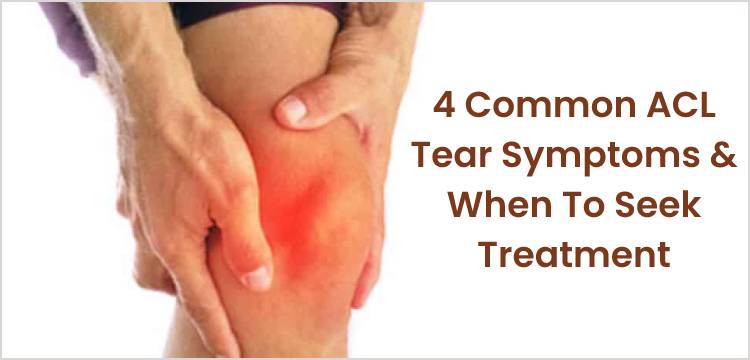
4 Common ACL Tear Symptoms & When To Seek Treatment
Signs & Symptoms of ACL Injuries:
People who suffer from ACL tears often notice a “popping” or popping sound when an injury occurs. The onset of symptoms is immediate and usually includes:
- Decreased range of motion in the knee
- Rapid swelling
- Severe aches, pains, tenderness along the joints
- Instability and discomfort when walking
ACL injuries usually occur during sports and fitness activities that can put pressure on the knee. This includes moves such as:
- Put your feet up and turn
- Suddenly slowing down and changing direction
- Sudden stop
- Clumsy landing after a jump
- Hit the knee directly
When To Seek Treatment:
If you have symptoms of an ACL injury, make an appointment with a knee specialist. They will perform a physical exam to determine the extent of the injury. X-rays may also be done to assess damage to the surrounding bone.
Rehabilitation can be the first step in the recovery process with the goal of recovering the full range of motion. You can spend several weeks working with a physical therapist who develops a customized exercise program tailored to your unique needs and symptoms.
However, ACL reconstruction surgery is often recommended if the ligament is injured or the injury is causing your knee to buckle during everyday activities. During the procedure, a surgeon will remove the damaged ligament and replace it with a new segment of the tendon which recreates the ACL. This replacement tissue — called a graft — can be taken from your own patellar, hamstring, quadricep, or cadaver tendons.
The surgery is typically done using a minimally invasive, arthroscopic approach. Special surgical tools and a video camera are inserted through small incisions in the knee joint. Depending on the type of graft, the graft is then fixed to the tibia (tibia) and femur (femur) using sutures or surgical screws. It acts as a bridge for the growth of new ligaments and the reconnection of bones.

